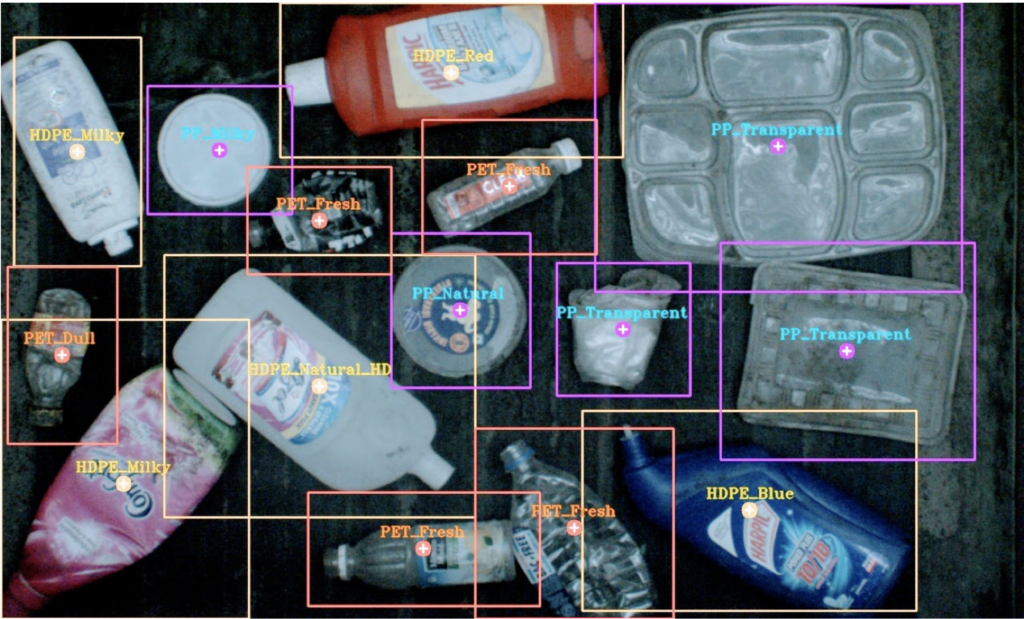
The CII’s International Waste to Worth Conference saw pertinent discussions among national and international waste experts on a range of issues. As official media partners for the event, Solid Waste India has been bringing you exhaustive coverage of the event. Today, in our Session Highlights, we focus on the second session of the Conference, which addressed the topic of ‘Leveraging Emerging Technologies for Waste Management’.
Moderated by Ms. P. Bineesha, Member, Technology Development Board, Ministry of Science & Technology and Executive Director, IIWM began the discussion by asking the panelists whether their digital platforms would help – or hurt – the interest of informal sector workers.
- Mr Abhay Deshpande, Founder & Director – Recykal
The philosophy behind Recykal, Mr Deshpande said, is to “Uberi-ze” trash. “Recykal connects stakeholders, a lot of whom are in the informal sector, on a digital platform, to enable them to fulfil EPR obligations. We have around 800-900 aggregators on the platform while 1000 DRCC are on-boarded. We have signed MoUs with municipalities and bring better value for recyclable material.” he said. Mr Deshpande also observed that there is a visible transition of workers from the informal to the formal sector and organizations like his are contributing to this. “These days, ragpickers, recyclers, and kabadiwalas have smartphones and consume digital content. Our platform is simple and easy to understand. It uses local language and formats that are suited even for those who can’t read.”
- Mr Jacob Rognhaug, Head of Circular Economy – Tomra, USA
Mr Rognhaug underlined India’s need to leverage technology to segregate large volumes of waste and create value from it. “Organic waste mixed with dry waste is not desirable and our technology provides low cost, efficient solutions. We use mature waste sorting technology in MRFs across the world that are designed to scan the waste and recognise all types of material through Artificial Intelligence. Tomra operates over 70,000 installations in 40 countries across the world and we understand how each city is different.”
Sensor-based sorting also enables authorities to examine waste composition data which contributes to profit-making, said Mr Rognhaug. Mixed waste sorting is the next big opportunity in waste management, he predicts. “In the 90s, there was no technology to automatically sort waste but now we are able to recover all types of waste and recyclables from mixed streams. However, volumes are key and we have to acknowledge that waste compositions change, and thus, output will also change.” Admitting that energy input is high as compared to manual plants, he said it is still small as compared to the cost-impact of the actual waste composition.
Mr Roghaug said the expected output for plants in India is changing and Tomra can tailor its technology easily to meet local needs. “Our technology is made in Europe but all mechanical arrangements can be made in the local market. We can create semi or fully automated solutions depending on the market,” he said.
- Mr Sandip Singh, CEO – Ishitva Robotic Systems

Mr. Singh reminded attendees that one of the biggest problems in recycling is poor waste segregation at the source level. “It’s really a bottleneck for the entire circular value chain. Once source-level segregation increases, either due to law enforcement or incentive mechanisms, materials available for recovery will increase exponentially. Large-scale expansion of MRFs will be required, providing a huge opportunity to private players and entrepreneurs. The volumes will be so large that automation will become a necessity to handle this kind of quantum and human sorting will be unable to handle this kind of scale. Economically viable segregation solutions like ours will enable large scale material sorting for recycling centers. In turn, this will drive more collection, building an entire circular economy.” Highlighting how data generated in the process can be leveraged, Mr Singh says, “We now have the capacity to link the entire system’s information with EPR and begun doing inventory predictions, sales predictions etc using this information, which is unheard of, in the industry.”
- Mr Kamal Raj, Sr. Associate Manager, Green Initiatives – Infosys
Mr Raj elaborated on the potential use of block-chain technology for waste management. Starting off with the admission that the concept is not yet well understood in India, Mr Raj explained, “Blockchain technology is basically a digital ledger that allows traceability. With India poised to become a recycling hub, blockchain technology can allow recyclers to track and trace where the materials are moving in a transparent manner. Currently, there are certain barriers to implementing it which is why I call it a ‘future technology’ in the circular economy. It is also energy-intensive since the amount of data storage that happens is quite enormous. We are trying pilots and Infosys will roll it out once we have implemented it for our own waste management system. I anticipate it would take at least a year or two.”
Mr Rashid K, Co-Founder & Director, Genrobotic Innovations

Mr Rashid described how his Kerala-based start-up had successfully implemented technology to replicate human actions required to clean sewage. “Our flagship product Bandicoot has provided a viable option to end the barbaric practice of manual scavenging in which sewage workers are dipped into manholes that often emit toxic gases and overflow with liquid sewage,” Mr Rashid noted while adding that they put in a lot of effort to make the user-interface of the robot very simple so that anybody can operate it. “We want a sanitation worker to easily operate a complex machine like this. That helps the worker rehabilitate quickly,” he shared.
- Mr Pavel Zedníček, Project Manager & International Relations, Institute of Circular Economy
Mr Zedníček cautioned on using the term circular economy without addressing issues related to carbon neutrality, economic competitiveness, reduction of waste pollution. “We have to always keep these criteria in mind since we might otherwise just do something for the sake of ‘circular economy’ without even considering the main indicators.” Mr Zedníček was optimistic that the use of IoT, AI and machine learning will revolutionise waste management in India. “There is limited access to data in the Indian waste sector and once these solutions are implemented, problems associated with waste management, including traceability, sorting, composition, and real-time measurement of waste in the logistics chain will be resolved. The technologies will help identify where the bottlenecks exist and solutions can be found based on new technologies.”



